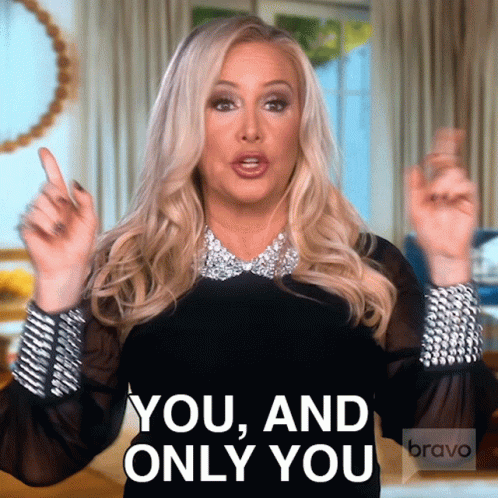When it comes to creating a landing page, the copy can make or break its success. Writing effective copy that converts visitors into leads or customers is a crucial part of any marketing strategy. However, it can be challenging to know where to start and what to avoid.
There are certain dos and don'ts to keep in mind when writing copy for a landing page. For example, one of the most important things to do is to keep the copy focused on the benefits of the product or service being offered. This means avoiding jargon and technical language that may confuse or alienate visitors.
On the other hand, there are also several things to avoid when writing copy for a landing page. For instance, using a generic or vague headline can fail to capture the visitor's attention and lead to a high bounce rate. Additionally, using too much text or failing to break up the copy with images or videos can also deter visitors from engaging with the page.
Understanding Your Target Audience
One of the most important factors in writing compelling copy for your landing page is understanding your target audience. By knowing who your audience is, you can tailor your copy to their needs, wants, and pain points. This will help you create copy that resonates with them and encourages them to take action.
Defining Your Target Audience
Defining your target audience involves understanding who your ideal customer is. This includes demographic information such as age, gender, income, education level, and geographic location. It also includes psychographic information such as personality traits, values, interests, and behaviors.
When defining your target audience, it's important to be as specific as possible. This will help you create copy that speaks directly to them and addresses their specific needs and pain points. For example, if you're selling a product that's designed for busy moms, your target audience might be women between the ages of 25-45 who have children and work full-time.

Researching Your Target Audience
Once you've defined your target audience, it's important to research them to gain a deeper understanding of their needs, wants, and pain points. This can be done through a variety of methods including surveys, focus groups, and customer interviews.
When researching your target audience, it's important to ask open-ended questions that allow them to express themselves freely. This will help you gain insights into their motivations, desires, and pain points. It's also important to pay attention to non-verbal cues such as body language and tone of voice.
By understanding your target audience and conducting thorough research, you can create copy that speaks directly to them and encourages them to take action. This will help you increase conversions and achieve your business goals.
Crafting Your Headline
When it comes to writing copy for your landing page, crafting a strong headline is crucial. Your headline is the first thing visitors will see and can make or break their decision to stay on your page. This section will explore the importance of a strong headline and provide tips for writing effective headlines.
The Importance of a Strong Headline
A strong headline is essential for capturing the attention of your audience and encouraging them to continue reading. It should be clear, concise, and compelling. Your headline should also accurately reflect the content of your landing page to avoid confusing or misleading visitors.
According to Taboola, using a strong headline can increase click-through rates and conversions. A well-written headline can also help establish trust and credibility with your audience.
Tips for Writing Effective Headlines
Writing an effective headline can be challenging, but there are several tips you can follow to make the process easier:
- Keep it short and sweet: Your headline should be no more than 10-12 words to avoid overwhelming your audience.
- Use active language: Use action verbs and strong language to create a sense of urgency and encourage visitors to take action.
- Highlight your unique value proposition: Your headline should clearly communicate the unique benefits of your product or service.
- Be specific: Use specific numbers, statistics, or examples to make your headline more compelling and credible.
- Avoid clickbait: Your headline should accurately reflect the content of your landing page to avoid misleading visitors.
By following these tips, you can craft a strong headline that captures the attention of your audience and encourages them to continue reading. Remember, your headline is your first impression, so make it count!
Writing Your Copy
Writing copy for your landing page can be a daunting task, but it is essential to get it right. Your copy needs to be clear, concise, and persuasive, and it should focus on the benefits of your product or service. In this section, we will discuss some dos and don'ts of writing copy for your landing page.
Structuring Your Copy
The structure of your copy is critical to its success. You need to make sure that your copy is easy to read and scan. Use short paragraphs, bullet points, and headings to break up your text. Your headline should be clear and attention-grabbing, and your subheadings should be informative and persuasive.
When structuring your copy, remember to keep the most important information at the top of the page. Your visitors should be able to understand the benefits of your product or service within seconds of landing on your page.
Using Persuasive Language
Your copy should be persuasive and compelling. Use language that resonates with your target audience and highlights the benefits of your product or service. Avoid using jargon or technical language that might confuse or alienate your visitors.
Focus on the benefits of your product or service rather than its features. Your visitors want to know how your product or service will improve their lives, not the technical details of how it works.
Highlighting Benefits over Features
When writing your copy, it's essential to highlight the benefits of your product or service. Benefits are the positive outcomes that your customers will experience as a result of using your product or service. Features, on the other hand, are the technical details of your product or service.
For example, if you're selling a fitness app, you might highlight the benefit of losing weight and feeling healthier rather than the feature of tracking your calories. Benefits are what your customers care about, so make sure you focus on them in your copy.
Designing Your Landing Page
Designing your landing page is just as important as writing the copy. The design of your landing page can have a significant impact on whether or not a visitor converts into a customer. Here are some tips for designing an effective landing page.
The Role of Design in Copywriting
The design of your landing page should complement your copy. It should be visually appealing and easy to navigate. The design should also reinforce your messaging and help guide the visitor towards the call-to-action. A well-designed landing page can help build trust with the visitor and increase the likelihood of conversion.
Tips for Designing an Effective Landing Page
Here are some tips for designing an effective landing page:
- Keep your landing page simple. Avoid clutter and focus on the essentials.
- Use contrasting colors to make important elements stand out.
- Optimize your call-to-action (CTA) by making it prominent and clear.
- Use high-quality images that are relevant to your messaging.
- Ensure that your landing page is mobile-friendly.
- Make sure that your landing page loads quickly.
By following these tips, you can create a landing page that is not only visually appealing but also highly effective in converting visitors into customers.
Testing and Optimization
Testing and optimization are critical components of any successful landing page strategy. By testing different variations of your landing page, you can identify which elements are working and which are not. This information can then be used to optimize your landing page for maximum conversions.
The Importance of A/B Testing
A/B testing, also known as split testing, is the most common form of testing used for landing pages. This involves creating two versions of your landing page, with one element changed in the second version. For example, you might change the headline, the call-to-action, or the layout of the page.
By running both versions of the page simultaneously and randomly sending half of your traffic to each version, you can determine which version performs better. This information can then be used to optimize your landing page for maximum conversions.
Analyzing Your Results
Once you have run your A/B test and collected data on the performance of each version of your landing page, it's time to analyze your results. Look for patterns in the data, such as which version of the page had a higher conversion rate, or which elements on the page were most effective at driving conversions.
Use this information to make informed decisions about how to optimize your landing page. For example, if you found that changing the headline on your page resulted in a higher conversion rate, you might want to test different headlines to see if you can further optimize your page.
Remember that testing and optimization are ongoing processes. Even small changes to your landing page can have a big impact on your conversion rate, so it's important to continually test and optimize your page to ensure that you are getting the best possible results.
Conclusion
Writing copy for a landing page can be challenging, but following the dos and don'ts can help you create a successful page that converts visitors into customers. Remember to keep your copy clear, concise, and focused on your audience's needs and desires. Use attention-grabbing headlines, persuasive language, and compelling visuals to capture visitors' attention and keep them engaged.
Don't forget to test your landing page to see how it performs and make changes as needed. A/B testing can help you determine which version of your page is most effective and improve your conversion rates.
Finally, always keep your target audience in mind and tailor your copy to their specific needs and preferences. By following these guidelines, you can create a landing page that not only looks great but also drives results.




